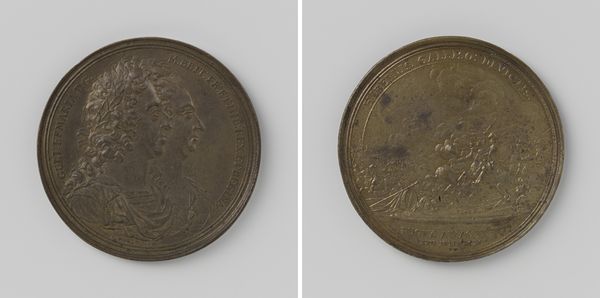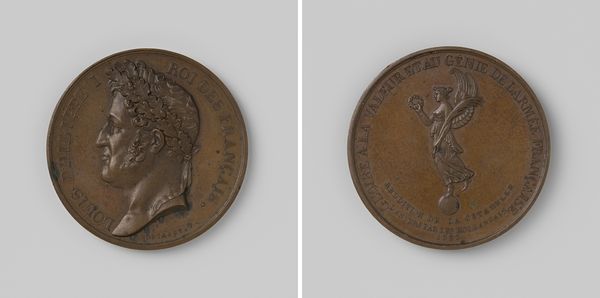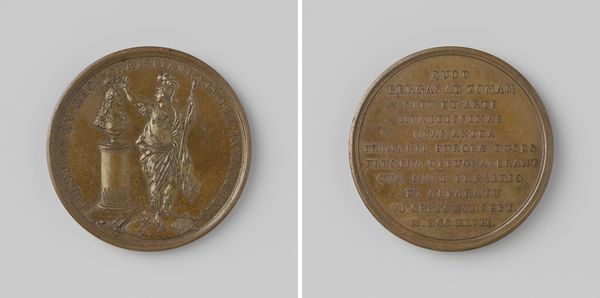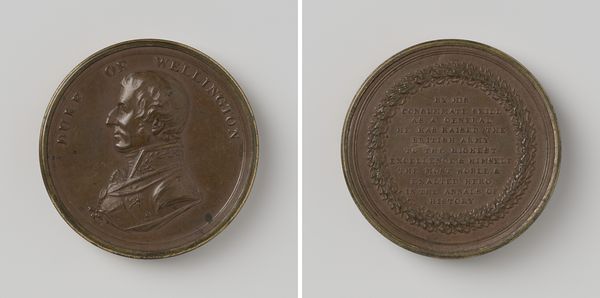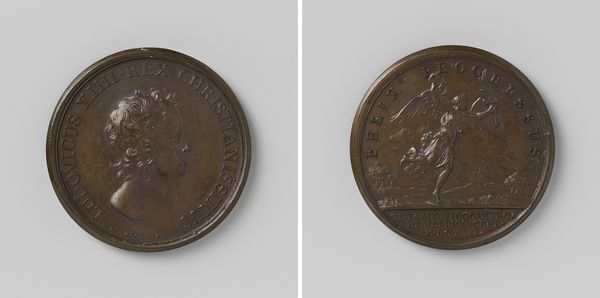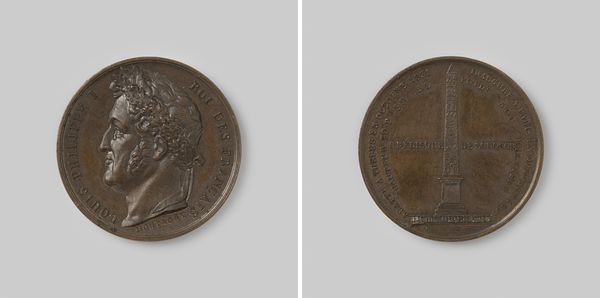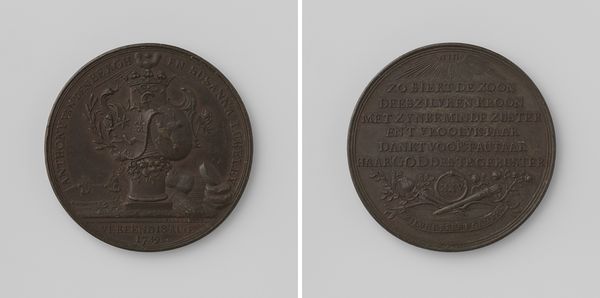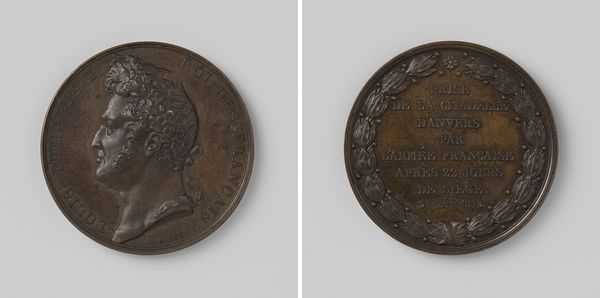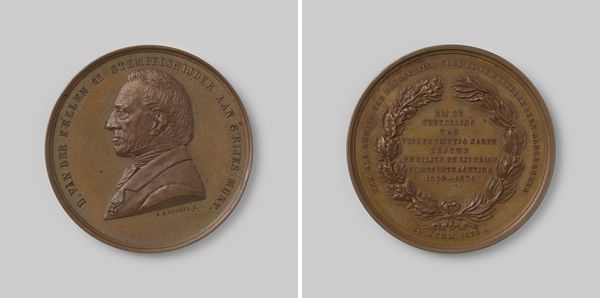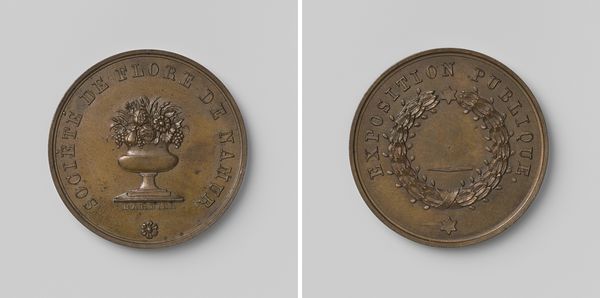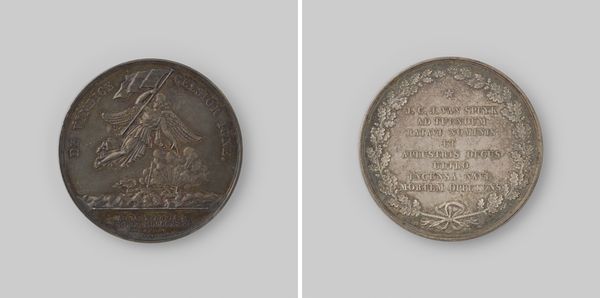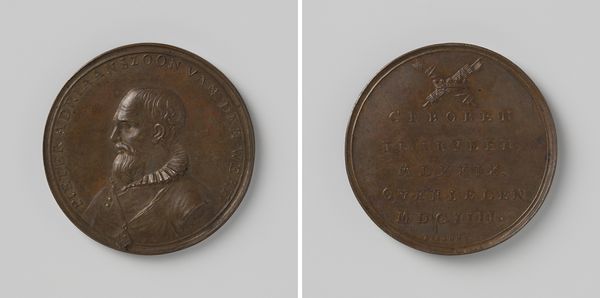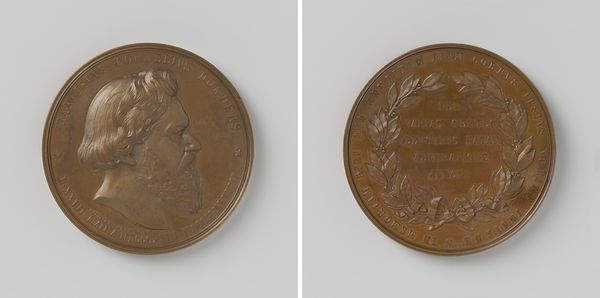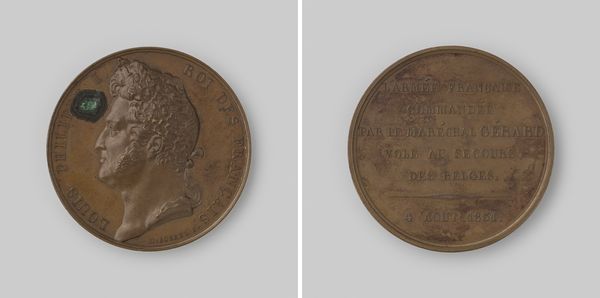
bronze, sculpture
#
portrait
#
medal
#
neoclacissism
#
sculpture
#
bronze
#
sculpture
Dimensions: diameter 8.3 cm, weight gr
Copyright: Rijks Museum: Open Domain
Editor: This bronze sculpture, "Eerbetoon aan de Franse vice-admiraal De Suffren door de VOC" from 1784 by Johann Heinrich Schepp...it feels like a classical coin, almost. It’s interesting how something so small can commemorate such significant events. What stands out to you in this piece? Curator: What strikes me is how this object signifies the intersection of global power dynamics. The VOC, or the Dutch East India Company, commissioned this to honor a French admiral. Why would a company built on colonial extraction celebrate a military figure from another European power? Editor: Perhaps because Suffren aided the Dutch against the British in the Indian Ocean? It looks like it. Curator: Precisely. It reflects a moment of shifting alliances against British hegemony. Now, consider the portrayal of Suffren. Does his image convey merely individual heroism? Or do you see broader symbolic intent? Editor: He looks like a Roman Emperor with the laurel. So, I guess the image is an idealized projection of power, less about him as an individual, and more about him embodying the classical ideal? Curator: Exactly. And consider this Neoclassical style. Why revive the aesthetic of ancient empires during a time of colonialism? This act of ennobling Suffren in this particular way is significant, and almost feels calculated when one consider that VOC's actions involved the subjugation of colonized populations. Editor: So the medal seems to reflect more about how the VOC wanted to be seen, versus what they were actually doing, cloaking its exploitative business in the trappings of Roman glory? Curator: Precisely! The layering of meaning in this object allows us to ask difficult questions about power, representation, and historical memory. What does it mean to create these types of objects during an era of great inequality? Editor: That's definitely made me think about it very differently, about what historical actors hide behind this Neoclassical facade.
Comments
No comments
Be the first to comment and join the conversation on the ultimate creative platform.
